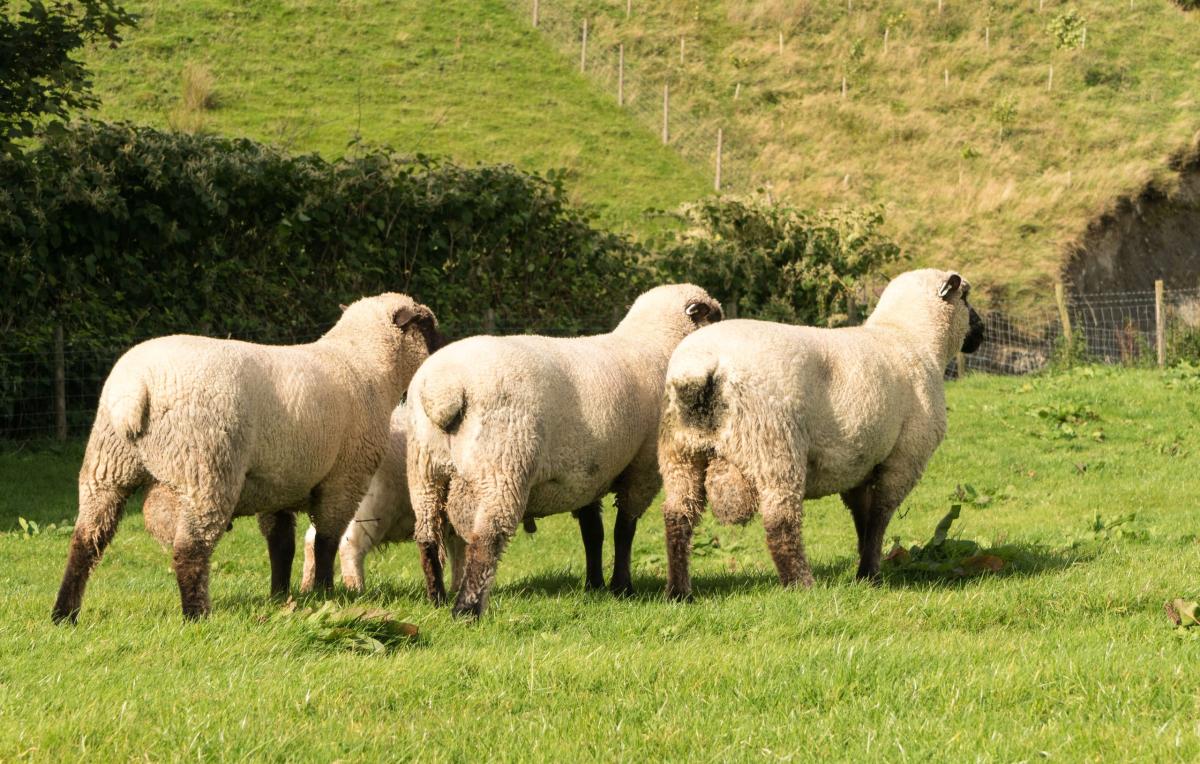
Fertility at tupping is the single biggest influencer on any sheep enterprises’ bottom line. If ewes tup well – they scan well, they lamb well, and they sell well. Animax takeover our blog to share how to master trace element nutrition to support you this tupping season. This blog was originally shared by Animax's experts here.
The importance of tupping has been exacerbated by record lamb prices this year. There are also indications that replacements are going to cost an arm and a leg, furthering the importance of tupping some more.
Looking at a possibility of these market trends continuing into next year, coupled with unpredictable cereal prices, optimising ewe condition off grazing and forage is going to be paramount to a successful year in the business of sheep farming.
How to master ewe condition
Ewes in better condition going into tupping will have an increased ovulation rate and embryo survivability. As the pregnancy progresses, better foetal development and less risk of metabolic disease. Before tupping, lowland flocks should be targeted at 3.5 body condition score (BCS), and hill breeds targeted at 3.0.
Start working on hitting targets early, even as soon as spring, by checking ewe condition while handling for other jobs. Earlier weaning decisions and getting underconditioned ewes ‘flushed’ on good quality forage in plenty of time can be a powerful tool. This is often underutilised in favour of weaning by the calendar.
Proactively monitor ewe condition through the lactation and keep an eye on grass stocks to support the BCS of the ewe and performance of this year’s lamb crop.
How to master trace element nutrition
Almost all grazing land is short in one or more of the essential trace elements – cobalt, copper, iodine, and selenium.
Sheep are also often naturally exposed to trace element antagonists – such as iron, manganese, sulphur, aluminium, and molybdenum – that can compromise trace element uptake.
More specifically, sheep on brassicas – such as rape, kale, or turnips – are exposed to goitrogen substances known to inhibit the availability of iodine. Trace elements are all collectively critical to digestion (forage utilisation), immunity, and reproduction.
Cobalt: Cobalt is converted by rumen bacteria into Vitamin B12 critical for energy cycles, metabolism, lamb growth and pregnancy.
Copper*: Copper is required during gestation by the ewe for development of the lamb’s central nervous system. Inadequate supply mid-pregnancy may result in swayback.
Iodine: Iodine deficiency in ewes during the breeding season can manifest as poor condition, reduced fertility, and decreased foetal viability.
Selenium: Selenium is critical for normal cell function, fertility, and effective immune responses to viral, bacterial and parasite encounters.
*A forage or soil analysis, or indeed studying any historic records of the farmland, can indicate if there is a copper deficiency and or antagonists. Always consult your vet or SQP to establish whether there is a need to supplement copper, as excess copper can result in copper toxicity which can be fatal.
Supplying less than enough trace elements can impact on condition, fertility, lamb development and thrift. More than enough trace elements will either by-pass what the ewes can physically absorb or cause toxicity and cost you money.
Test before supplementing
To determine your flock’s current trace element status, a mineral audit consisting of a forage or soil analysis and a dietary analysis (including all forages and supplementary feed) can be undertaken. Blood analysis with your vet can also be carried out on a suitable sample size of animals. Another great tool is post-mortems of fallen stock, if fresh liver tissue can be analysed for trace element status presenting some useful information for your vet to form a plan with you.
Results of these tests should be discussed with a suitable advisor (vet, nutritionist and/or SQP) to form a suitable trace element feeding and supplementation regime.
What to do if tests show a trace element deficiency
If a deficiency is detected, first look to the type of supplementation best suited to the system. It doesn’t matter if you are a lowland or hill farm – if you are reliant on grazing – bolusing is the easiest and most precise and effective form of supplementation you can count on.
Compared to other modes of supplementation, when proactively bolusing with ANIMAX Tracesure® Sheep, you can count on every animal with a bolus having what they need every day for up to 6 months. It only takes a matter of seconds and can be coincided with other management activity.
Whether you’re seeking higher scanning percentages or greater lamb thriftiness, proactively giving a bolus in the weeks before tupping will reduce the risk of any performance-limiting trace element deficiencies. Leaving one less variable to worry about. It’s the complex, made simple.
